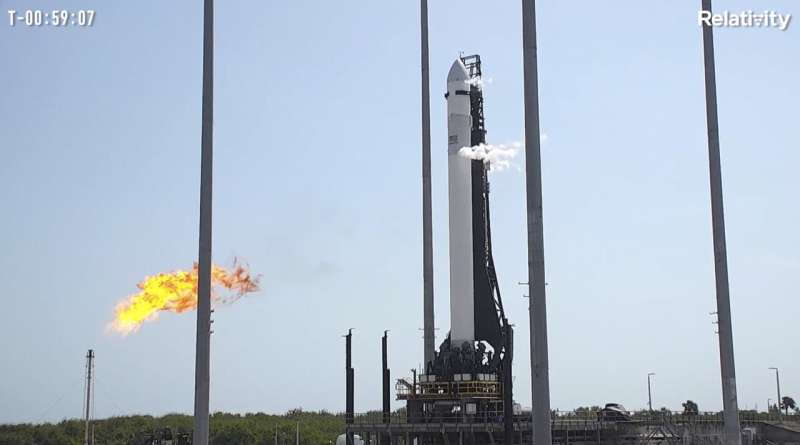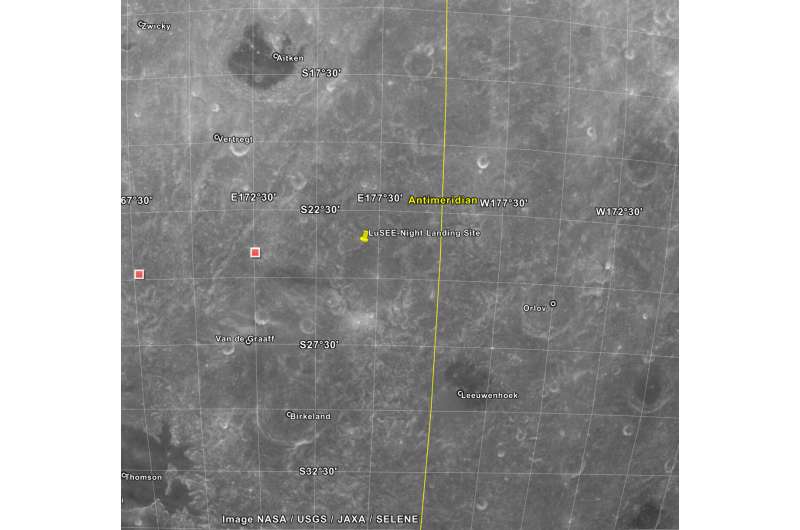
Copernical Team
Navigation Lab exploring Galileo's future - and beyond
 Would you like to know the future of satellite navigation? Try ESA's Navigation Laboratory. This is a site where navigation engineers test prototypes of tomorrow's user receivers, using simulated versions of the navigation signals planned for the coming decade, such as set to be transmitted from Galileo's Second Generation satellites.
Jose Antonio Garcia Molina, heading ESA's Radio Navigat
Would you like to know the future of satellite navigation? Try ESA's Navigation Laboratory. This is a site where navigation engineers test prototypes of tomorrow's user receivers, using simulated versions of the navigation signals planned for the coming decade, such as set to be transmitted from Galileo's Second Generation satellites.
Jose Antonio Garcia Molina, heading ESA's Radio Navigat SatixFy and Kythera Space solutions partner to deliver advanced payload solutions for LEO constellations
 SatixFy Communications Ltd. ("SatixFy") (NYSE AMERICAN: SATX), a leader in next-generation satellite communication technology solutions from chip to product, and Kythera Space Solutions ("Kythera"), the leader in dynamic management systems for next-generation payloads and SATCOM networks, announced that they have partnered to deliver advanced payload solutions for LEO constellations.
Satix
SatixFy Communications Ltd. ("SatixFy") (NYSE AMERICAN: SATX), a leader in next-generation satellite communication technology solutions from chip to product, and Kythera Space Solutions ("Kythera"), the leader in dynamic management systems for next-generation payloads and SATCOM networks, announced that they have partnered to deliver advanced payload solutions for LEO constellations.
Satix Sidus Space awarded new contract for Next Phase of NASA ASTRA Project
 Sidus Space, Inc. (NASDAQ:SIDU) has been awarded a follow-on agreement for the next phase of NASA's Autonomous Satellite Technology for Resilient Applications (ASTRA) project.
During this phase of the ASTRA project, the Autonomous Systems Lab (ASL) team at NASA's Stennis Space Center near Bay St. Louis, Mississippi, will join Sidus Space to integrate ASTRA's autonomous operational on-orbit
Sidus Space, Inc. (NASDAQ:SIDU) has been awarded a follow-on agreement for the next phase of NASA's Autonomous Satellite Technology for Resilient Applications (ASTRA) project.
During this phase of the ASTRA project, the Autonomous Systems Lab (ASL) team at NASA's Stennis Space Center near Bay St. Louis, Mississippi, will join Sidus Space to integrate ASTRA's autonomous operational on-orbit Astronomers find missing link for water in the Solar System
 Using the Atacama Large Millimeter/submillimeter Array (ALMA), astronomers have detected gaseous water in the planet-forming disc around the star V883 Orionis. This water carries a chemical signature that explains the journey of water from star-forming gas clouds to planets, and supports the idea that water on Earth is even older than our Sun.
"We can now trace the origins of water in our
Using the Atacama Large Millimeter/submillimeter Array (ALMA), astronomers have detected gaseous water in the planet-forming disc around the star V883 Orionis. This water carries a chemical signature that explains the journey of water from star-forming gas clouds to planets, and supports the idea that water on Earth is even older than our Sun.
"We can now trace the origins of water in our Distant star TOI-700 has two potentially habitable planets
 NASA recently announced the discovery of a new, Earth-sized planet in the habitable zone of a nearby star called TOI-700. We are two of the astronomers who led the discovery of this planet, called TOI-700 e. TOI-700 e is just over 100 light years from Earth - too far away for humans to visit - but we do know that it is similar in size to the Earth, likely rocky in composition and could potential
NASA recently announced the discovery of a new, Earth-sized planet in the habitable zone of a nearby star called TOI-700. We are two of the astronomers who led the discovery of this planet, called TOI-700 e. TOI-700 e is just over 100 light years from Earth - too far away for humans to visit - but we do know that it is similar in size to the Earth, likely rocky in composition and could potential BlackSky wins $150M competitive bid for Space-Based Tactical GEOINT solution
 BlackSky Technology Inc. (NYSE: BKSY) won a $150+ million competitive contract to provide advanced space-based tactical GEOINT-as-a-service to an international ministry of defense customer.
"BlackSky is taking real-time, space-based tactical GEOINT to the next level with industry-leading rapid revisit capabilities and fully automated low-latency delivery of AI-derived mission intelligence,
BlackSky Technology Inc. (NYSE: BKSY) won a $150+ million competitive contract to provide advanced space-based tactical GEOINT-as-a-service to an international ministry of defense customer.
"BlackSky is taking real-time, space-based tactical GEOINT to the next level with industry-leading rapid revisit capabilities and fully automated low-latency delivery of AI-derived mission intelligence, Relativity Space postpones first 3D-printed rocket launch
 The Relativity Space launcher Terran 1 postponed the launch of the first 3D-printed rocket to space on Wednesday.
The rocket was to lift off from the Cape Canaveral Space Force Station early in the afternoon, but after several delays, the operation was scrubbed. The launch system automatically aborted during countdown with about 70 seconds to go twice. During the second stoppage, the sy
The Relativity Space launcher Terran 1 postponed the launch of the first 3D-printed rocket to space on Wednesday.
The rocket was to lift off from the Cape Canaveral Space Force Station early in the afternoon, but after several delays, the operation was scrubbed. The launch system automatically aborted during countdown with about 70 seconds to go twice. During the second stoppage, the sy 3D-printed rocket's debut launch aborted at last minute

A rocket made almost entirely of 3D-printed parts remained on the pad Wednesday after its debut launch attempt was aborted at the last minute.
California-based Relativity Space was attempting to launch the rocket to orbit from a former missile site at Cape Canaveral Space Force Station.
Millions of galaxies emerge in new simulated images from NASA's Nancy Grace Roman Space Telescope

Lunar telescope project aims to search for ancient radio waves

Scientists at the U.S. Department of Energy's (DOE) Brookhaven National Laboratory are leading a new effort to land a radio telescope on the moon. If successful, the project will mark the first step towards exploring the Dark Ages of the universe.
The Dark Ages are an early era of cosmological history starting about 380,000 years after the Big Bang. There were no stars or planets in the Dark Ages. It's a point in time that scientists have never been able to observe.
